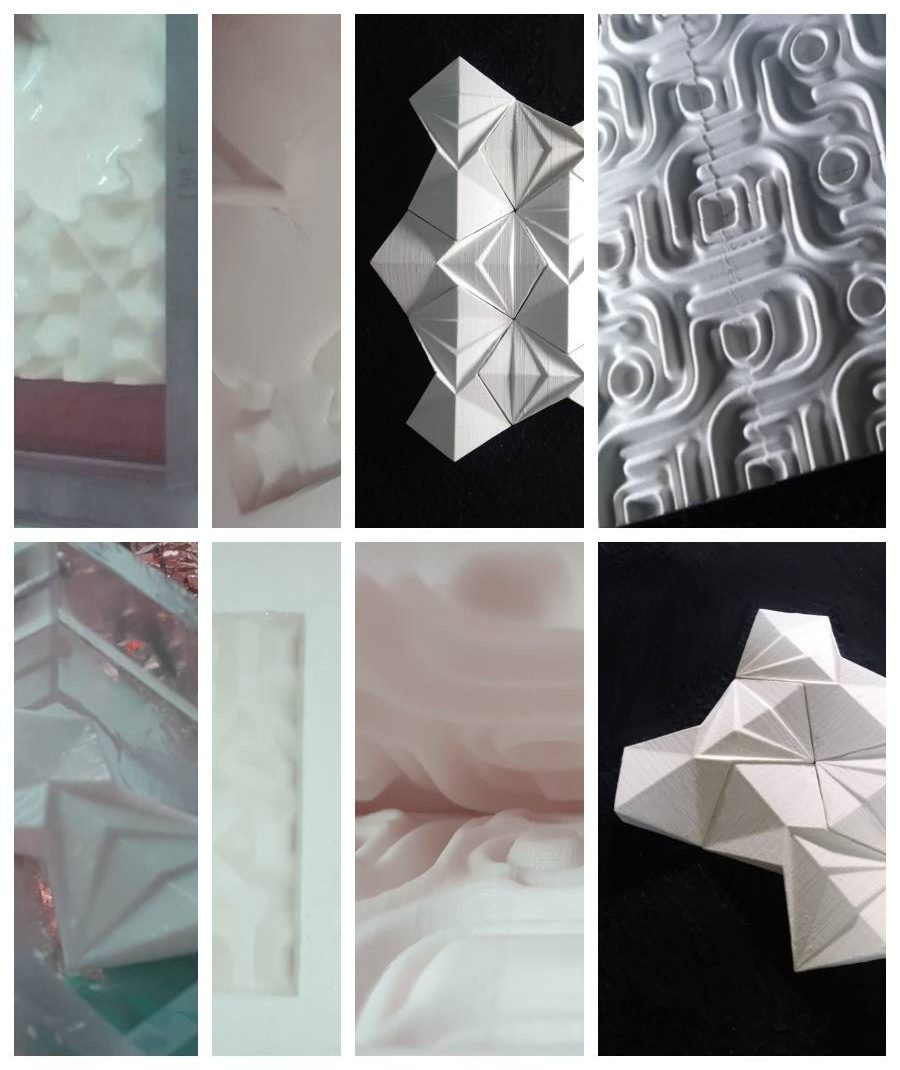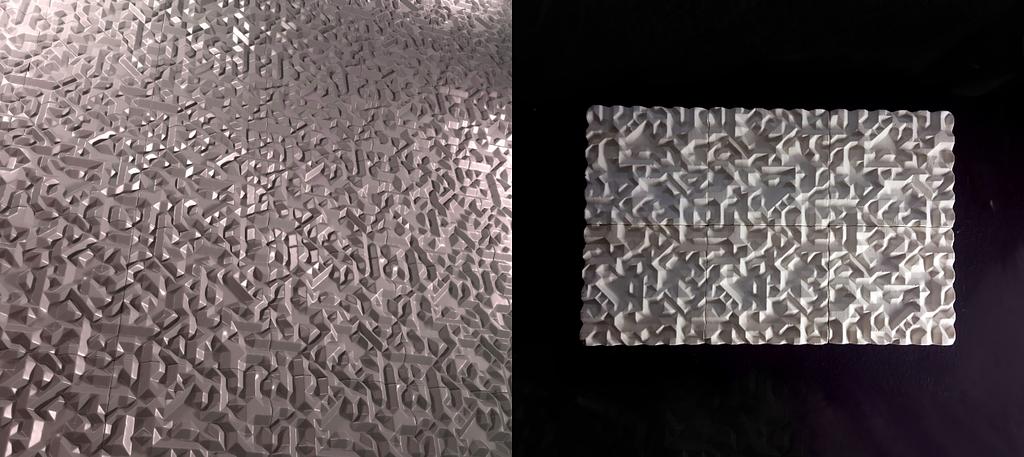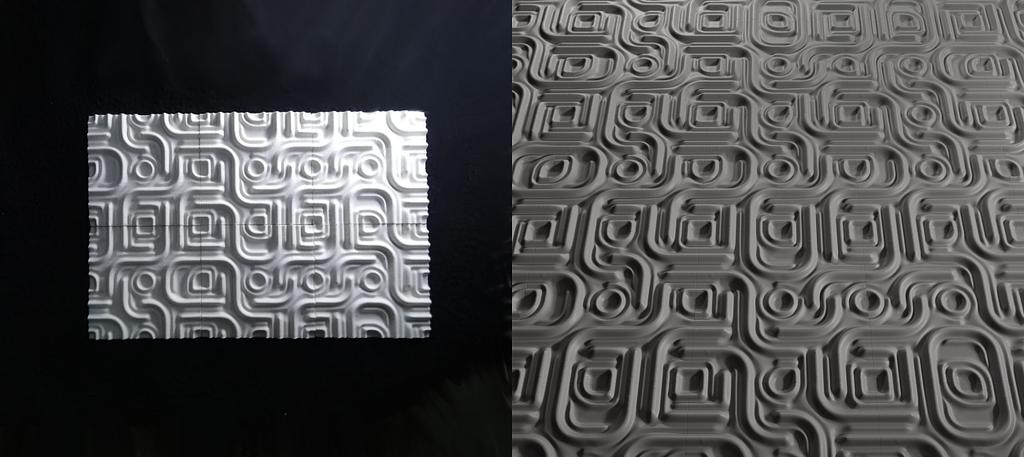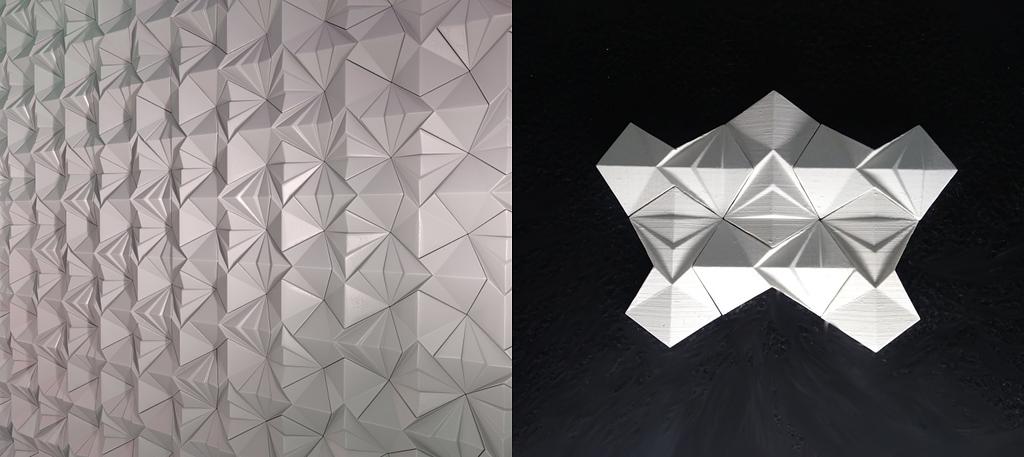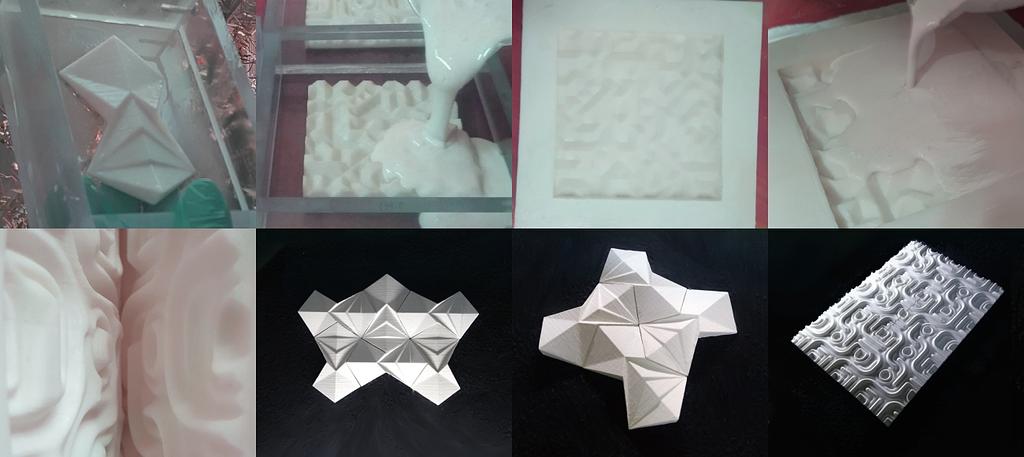This research project explores the creative and practical use of planar symmetry in designing modular interior surfaces. Drawing inspiration from nature’s own asymmetric patterns, the work redefines how repetition, variation, and modularity can coexist to form unique, customisable environments.
At the heart of the project is an experimental approach that applies symmetrical algorithms to surface design. While traditional modular systems often rely on perfect uniformity, this research intentionally introduces subtle variations that mimic the organic irregularities found in natural forms. The result is a system in which digitally identical tiles create the illusion of diversity and movement, generating custom-formed surfaces with a dynamic visual and tactile quality.
Each module was developed through rapid prototyping, utilising 3D-printed moulds to cast tiles from a simple mixture of stone dust and water. These handmade prototypes demonstrate how a small number of moulds can produce a wide variety of surface outcomes, offering significant economic and ecological advantages in terms of both production and material efficiency.
By reducing the need for multiple unique moulds and embracing controlled variation, this approach enables the achievement of high aesthetic complexity with minimal industrial tooling. This not only streamlines the manufacturing process but also aligns with sustainable practices in design and construction.
Ultimately, the project positions symmetry not just as a formal principle but as a functional strategy—a bridge between nature, technology, material, and space. It opens new pathways for interior surface design where every detail contributes to both visual richness and environmental responsibility.
SCIENTIFIC COORDINATOR
Ingrid Paoletti, Korcan Gülfidan

